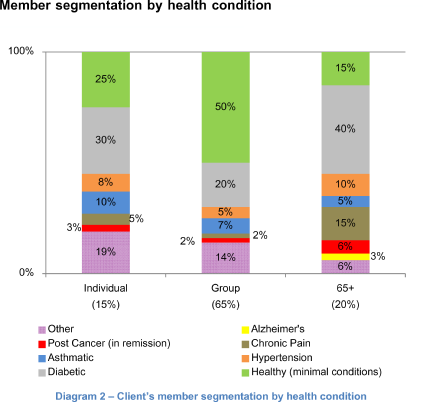Health Coaches
20.6k
Times solved
Intermediate
Difficulty
Our client is a large national health care payer (health insurance company, e.g. Aetna) exploring the launch of a new disease management program to better serve its 5 million members.
The idea is to hire and train a team of “Health Coaches” to specialize in a single disease area (e.g., heart disease, diabetes, etc.). Each coach will manage a portfolio of patients to reduce the costs of overall health expenditures (e.g., reminders to take drugs, provide limited medical advice, suggested diet, etc.). Studies show that once a month contact with each patient reduces health spending by 5%, on average.
Should our client launch the program? If so, what steps should it take?
Case Comments
I. Background
II. Profitabiliy – Question 1: What can we get out of this chart?
II. Profitabiliy – Question 2: Which segment is likely to generate the greatest per member costs? Why?
II. Profitabiliy – Question 3: Which disease area should we look at first?
III. Conclusion
20.6k
Times solved
Intermediate
Difficulty
Do you have questions on this case? Ask our community!








